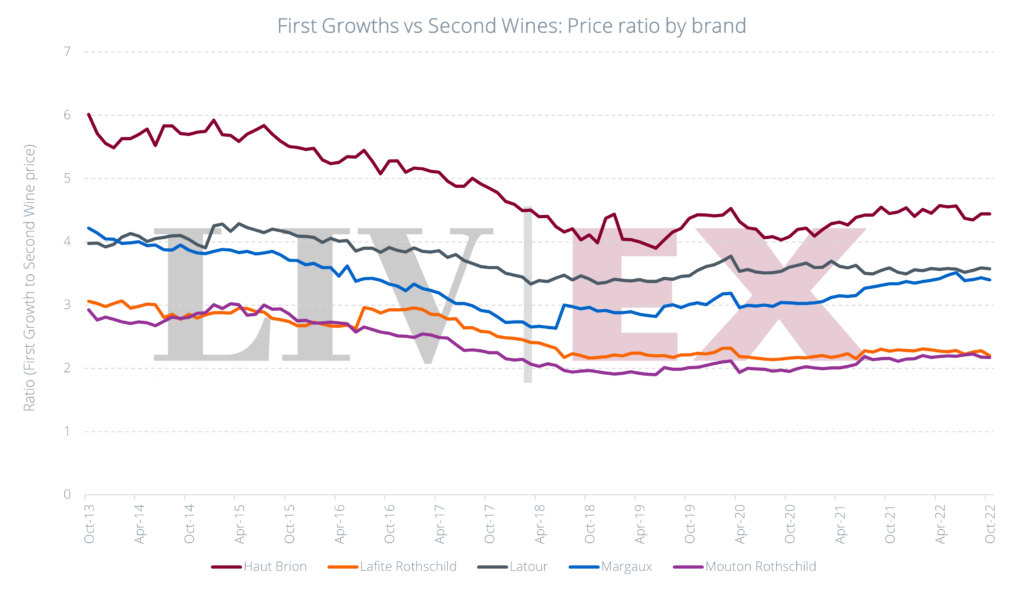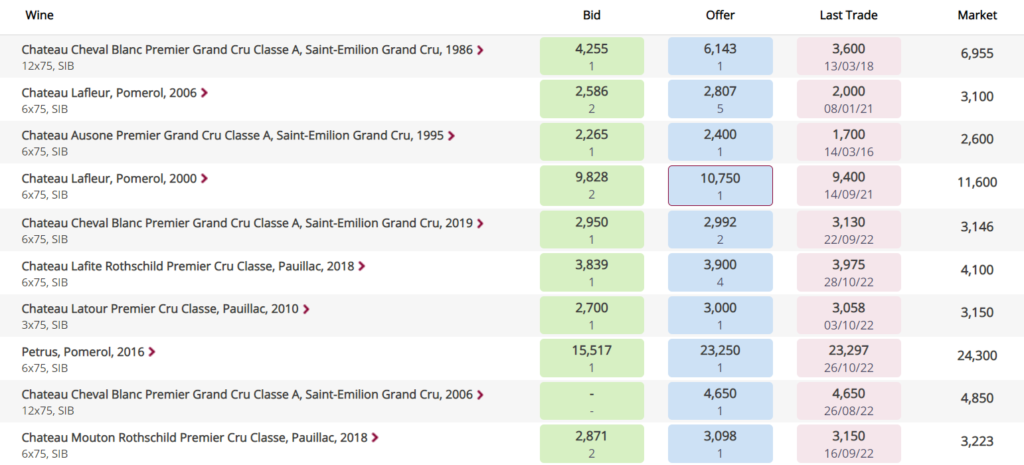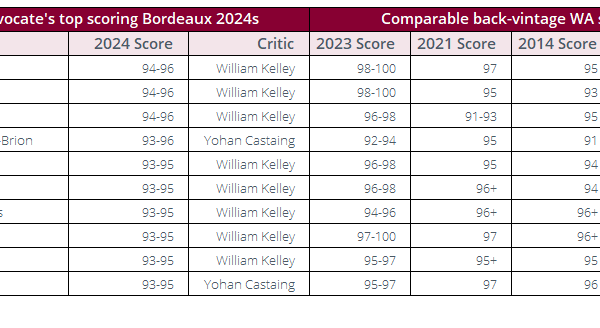Recent trading activity
Bordeaux led weekend activity, accounting for 40.9% of total trade. It was driven by top vintages, mainly 2005, 2019 and 2009. Château Lafite Rothschild 2005, which boasts 100-points from James Suckling, was in the trading spotlight.
Demand for Burgundy continued to rise, and the region accounted for 31.7% of total trade. The high value wines of Domaine de la Romanée-Conti were at the forefront of activity.
Champagne took 10.5% of the market, with Louis Roederer Cristal 2014 leading trade within the region. The wine’s performance was examined in more depth in this month’s Market Report.
The growing price gap between the First Growths and their second wines

Eleven years ago, it was possible to buy four bottles of a First Growth’s second wine for every bottle of the parent grand vin on average.
In June 2019, the price gap shrank to a historic low of 2.8, due to the rising value of the second wines. Since then, the average pricing gap has widened once again thanks to price increases for the First Growths but some second wines offer better value than others.

Today, the price of a grand vin would buy you 3.2 bottles of a second wine on average. But there is some divergence on an individual brand level.
The least expensive of the First Growths, Château Haut-Brion, has the best ratio with its second wine, Le Clarence de Haut-Brion. On average, one can buy just over four bottles of Le Clarence for the price of the grand vin.
The smallest price gaps are for Château Mouton Rothschild and Château Lafite Rothschild, where the price of the grand vin would buy you just two bottles of their second wines.
Carruades de Lafite, a few vintages of which recently broke their previous trading records, is also the most expensive second wine. It has an average price tag of £3,241 per 12×75 – over three times more than the price of Le Clarence de Haut-Brion.
See LIVE opportunities for blue-chip Bordeaux on the exchange.
Opportunities to buy blue-chip Bordeaux

Liv-ex analysis is drawn from the world’s most comprehensive database of fine wine prices. The data reflects the real time activity of Liv-ex’s 600 merchant members from across the globe. Together they represent the largest pool of liquidity in the world – currently £80m of bids and offers across 16,000 wines.
Independent data, direct from the market.




